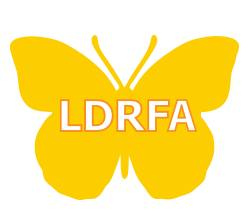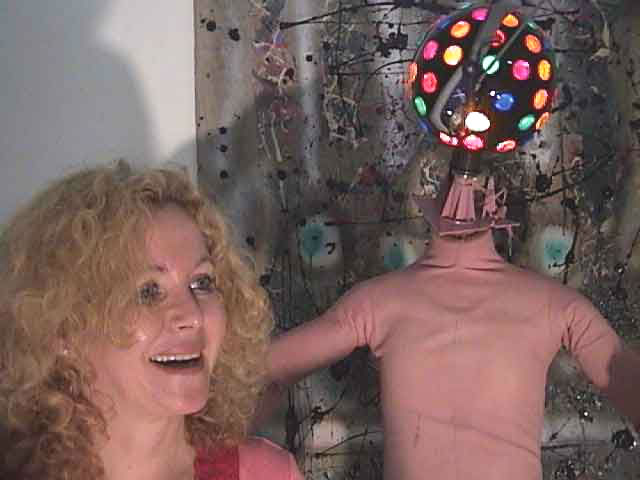Article by The Jewish Week
 As a student in Israel, Zahavit Paz knew she had a problem. She couldn’t read or take instruction easily like other children and her teachers dismissed her as a dreamer. “My mother thought it was because of her divorce,” she recalls. “In Israel, they never picked up on what I had.”
As a student in Israel, Zahavit Paz knew she had a problem. She couldn’t read or take instruction easily like other children and her teachers dismissed her as a dreamer. “My mother thought it was because of her divorce,” she recalls. “In Israel, they never picked up on what I had.”
It took several decades for Paz to realize that she suffered from dyslexia and wanted to be a full-time artist. She would first spend years struggling to succeed in school before forging a lucrative career in business and serving as an impresario for other Israeli artists. “I was successful at all these things but I was never satisfied,” she says. “I was always covering up how I struggled. It was like going through life like a blind person. You can’t see so you develop your other senses.”
Now in her late 40s, Paz no longer has something to hide and proves it by calling her first full-fledged art installation “Are We Dumb?” Dedicated to all the years she felt “like an outcast” and to the learning disabled children in need of help, the installation, on display this month at SUNY Empire State College’s art studios in Chelsea, “is the most important thing I’ve ever done. Within the art, I wanted to make the unspoken words that no one says about the learning disabled,” says Paz.
Housed in a small, white room shaped like a pyramid, the eye-catching installation, though heavily weighted with symbolism, ultimately comes across as a colorful, whimsical and intriguing work of art. Using materials she found on the street, Paz constructed a wooden “weapon” that resembles a cross between a porcupine and a primitive tank. A child mannequin with a revolving disco ball for a head straddles this contraption studded with butterflies and surrounded by mice that electronically squeak when activated. Nearby lies a “Pandora’s Box” filled with cardboard; a tree-like structure with a human face called “I Am Alive” and two abstract paintings, one titled “Consciousness” and one unnamed and reminiscent of Jackson Pollack.
Soft-spoken, ethereal and strikingly youthful, Paz eagerly discusses her work. She is not the kind of artist who shrouds her process in mystery. If certain shapes attract her, like pyramids or pentagons, she will research their cultural, mythic significance. “Over there, that is a human being on a crutch,” she says of the tree-like structure. As for the mice, “they represent hypocrisy in Jewish tradition. The Pandora’s Box holds confusion but also hope. People always forget about the hope in Pandora’s Box.”
“Zahavit has a clear direction of what she wants to do,” says Jimmy Nasser, a clothing manufacturer who has dyslexia and currently works with Paz to establish an organization called the Learning Disability Resources Foundation. “When I saw her art, I told her that it really embodies being dyslexic … It definitely made a big impact on me.”
With a small but steady stream of visitors, Paz observes that her installation is “becoming like a little shrine or temple. People want to sit in it and be alone. For me, my art is to educate.”
Born in Kfar Saba, Israel, Paz spent her childhood in need of tutors so she could “keep up. It was always a struggle to pass the next class,” she recalls.
Paz credits her “strong will to achieve” as the reason for receiving a degree in science before immigrating to America in 1974. She found work in the automobile industry and soon moved onto to exporting textiles to South America and forming a company that manufactured men’s suits in Italy. In 1986, she joined the board of the America-Israel Cultural Foundation and served as the young leadership chairperson in 1995.
Throughout the years, Paz yearned to go back to school and enrolled in New York University in 1996. In a public speaking course, “I told a professor I had a problem and a light went on,” she recalls. “The professor sent me to get tested and I found out so many things. … That was a dark period for me, sitting in speech therapy with 7-year-olds.”
The following year, Paz left NYU, alleging that a staff member in charge of the university’s writing center made disparaging remarks about her learning disability and denied her extra appointments with a tutor. “I felt shame, anger and humiliation,” she recalls. “People are so quick to dismiss dyslexia. “Oh, you confuse words, that’s all. People don’t realize it’s so much more.”
About a year and half ago, several close friends of Paz became terminally ill. “Everyone was reaching out to me. Painting was always in me, but that’s when I finally started to do it,” she recalls. “One of my friends was dying of cancer in this horrible hospital and the only good thing there was that an art therapist showed her how to paint on glass. The painting became so important to her.”
When her friend died, Paz acknowledged that “art was what I wanted to do full-time.” Deciding to leave the business world, she applied to an Empire State College program called Studio Semester that grants free studio space to promising artists. The school gave her a studio and an office space that she calls her “Kosher Reading Room.” In retrospect, she realizes that she always wanted to do this, [make art] but I didn’t have the means,” she says. “A learning disability is something that affects your entire life, including your relationships and self-esteem. But I have survived.”
Paz hopes to bring her installation to schools and other venues where children and their parents can see it. Any proceeds she earns will benefit her Learning Disabilities Resource Foundation, which will provide online information for the learning disabled. “I want them to know they’re not alone,” she says. “Kids should fight for their rights and I should help as many people as I possibly can.”



 It was a culmination of a life long journey. This installation was about her life, struggling with her own learning disability and ADHD; this show is her art statement about that struggle. “Are We Dumb?” was her response to how our educational institutions and society in general, deal with those who have learning disabilities. Dyslexia is an invisible disability to others and is often undiagnosed. People with learning disabilities can feel like an outsider and so, Paz chose to work with abandoned and discarded materials found on the streets of New York. This discovery connected the materials as being already “disabled” and a challenge to work with.
It was a culmination of a life long journey. This installation was about her life, struggling with her own learning disability and ADHD; this show is her art statement about that struggle. “Are We Dumb?” was her response to how our educational institutions and society in general, deal with those who have learning disabilities. Dyslexia is an invisible disability to others and is often undiagnosed. People with learning disabilities can feel like an outsider and so, Paz chose to work with abandoned and discarded materials found on the streets of New York. This discovery connected the materials as being already “disabled” and a challenge to work with.